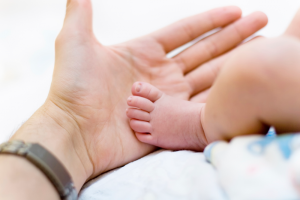Something Bugging You? How To Prevent And Treat Insect Bites In Babies And Children
Here’s how to stop a mosquito, ant, bee, fly or spider bite or sting from hurting your baby, toddler or small child, plus bite symptoms and treatment options to keep in mind.
Insects can be fun for children when they’re part of popular songs and nursery tales like Ants Go Marching and Eency Weency Spider, but experiencing a real life bug or spider bite can zap the fun out of spring and summer activities. Fortunately, we’ve put together all the information parents need to know about insect bites, including the CDC’s recommendations for prevention, facts about DEET versus Picaridin repellents, and the types of bites and stings as well as the symptoms and treatment options moms and dads should know.
Tips On How To Prevent Insect Bites On Babies And Kids
While many bug bite prevention steps are the same for adults and children, there are many additional precautions parents should take when trying to prevent insect bites and stings in little ones. Here is a list of general precautions for all ages, plus an additional list of special instructions that apply to infants and children.
General Prevention
The Centers for Disease Control (CDC) suggests that adults and children should help prevent bug bites and possible resulting diseases like Zika, dengue and Lyme disease by:
- Using insect repellent such as DEET, Picaridin, IR3535, oil of lemon eucalyptus (OLE) or para-menthane-diol (PMD)
- Covering exposed skin with long sleeves, pants, socks and a hat
- Limiting exposure by using screens to keep bugs outside and eliminating sources of standing water that attract bug populations
- Treating clothing with permethrin when visiting areas with high or dangerous insect populations that cause diseases like Zika, malaria, dengue and Lyme disease
Special Instructions For Children
The CDC also recommends that parents follow these bug bite prevention tips for kids:
- Refrain from using insect repellent on babies younger than 2 months, and instead opt for an elastic edged mosquito netting that is draped over their carrier, stroller or car seat
- Do not use repellents containing OLE or PMD on kids younger than 3 years
- Apply the repellent to your child yourself, rather than allowing him or her to touch the substance
- Try not to get any repellent on your child’s hands, as kids often put their hands in their mouths
DEET Versus Picaridin
Though some experts warn that non-natural insect repellents could be dangerous for children, DEET is a substance that has been used for decades and is considered by most doctors and pediatricians to be safe for children over the age of 2 months. It has virtually no recorded adverse health effects, other than a contact skin rash in some people, when applied according to label instructions. Using a concentration of about 10% provides protection for about two hours.
- Example products containing DEET include Cutter Backwoods and Off! Deep Woods.
Created by Bayer in the 1980s, picaridin (also called KBR 3023, Bayrepel and icaridin) is made from a plant extract from the genus Piper (the same plant that produces table pepper). Made available in the US in 2005, it has quickly become a more popular choice than DEET because it’s just as effective without the greasy texture and unpleasant smell. Additionally, the EPA reports there have been no adverse health effects recorded from the use of picaridin, meaning it is also widely considered a safe product. However, it is still relatively new compared to DEET (which was developed by the U.S. Army in 1946), meaning long-term health risks have yet to be studied. Using a concentration of about 7% provides protection for about two hours.
- Example products containing picaridin include Cutter Advances, Repel Smart Spray, and Sawyer Premium.
*Editor’s Note: It’s important to remember that if you apply any type of insect repellent to your child, he or she should take a bath at the end of the day.
Types of Bites and Stings, Plus Their Symptoms and Treatment
The body’s response to an insect bite or sting varies, depending on the type of insect and other factors. Most result in pain, swelling, redness and itching or stinging. Sometimes the skin can break open, which can easily lead to an infection and/or cellulitis if not taken care of. No matter what type of bite your child experiences, be sure he or she does not rub or itch the bite, as that spreads the poisons and can create a secondary infection.
MORE PARENTING TIPS:
- Ants: Ant bites usually occur in small clusters, with each bite possibly developing a central area of pus. If you suspect your child was bitten by ants, bathe the area in warm, soapy water and use hydrocortisone cream to help control itching and swelling. You should also try and prevent him or her from popping the blisters, which could lead to infection and more pain.
- Bees: If stung by a bee, your child will most likely have a small black stinger at the site of the sting. Carefully remove it with a credit card or other straight edge (using tweezers or pinching the stinger could inject more venom). Control swelling by icing the area and elevating the stung body part. Help any pain and itchiness with an antihistamine or a mix of baking soda and calamine lotion.
- Biting Flies: Fly bites can be extremely painful. If you suspect your child was bitten by a biting fly (a horsefly, black fly or sand fly, for example), you should wash the area with warm, soapy water and then apply ice for about 15 minutes at a time, several times throughout the day. You can also try applying a hydrocortisone cream to help control pain and itching.
- Chiggers: Chigger bite symptoms generally start one to three hours after the bite and include extreme itchiness that persists for several days and a reddened, flat or raised area that may resemble a pustule or blister. Contrary to popular belief, chiggers do not burrow into the skin and remain there — only the enzymes from the bite remain. Therefore, successful treatment often includes taking a cool bath or shower, applying a cold compress, and using calamine lotion or hydrocortisone creams to help control itching.
- Fire Ants: Fire ant bites generally produce a pimple-like sore that is extremely itchy and painful. If you suspect your child was bitten by a fire ant, you should bathe the affected area with warm, soapy water, elevate the site of the bite and use hydrocortisone cream to help control itching.
- Mosquitoes: Mosquito bites tend to happen more frequently near water sources and during dusk and dawn. If your child experiences a mosquito bite, gently wash the area in cool, non-soapy water and apply a topical anti-itch lotion.
- Spiders: Most spider bites are harmless, but some can cause blistering and necrotic skin ulcerations (from a brown recluse, for example). Black widow bites usually cause systemic symptoms like chest pain, nausea, vomiting and abdominal pain. If your child experiences any of these symptoms, seek medical treatment right away.
What To Do If Your Child Shows Signs Of An Insect Bite Allergy
If your child is allergic to the bite or sting, he or she may experience anaphylaxis, which is a reaction characterized by hives (itchy red blotches on the skin), wheezing, shortness of breath, chest pain, difficulty swallowing and unconsciousness. Anaphylaxis can trigger death in as little as 30 minutes, so if you child exhibits any of the above symptoms, or if he or she experiences fever or a red streak that spreads out from the bite, seek medical treatment immediately.
If your child has a history of anaphylaxis, do not wait for signs of a severe reaction before injecting epinephrine (which you should apply to the outer thigh, avoiding veins and buttock muscles). Giving the injection will not cause any harm if allergic reactions end up not developing, but not giving the injection could be fatal. Be sure to bring your child to the ER after an epinephrine injection, regardless if symptoms do not develop or existing symptoms begin to subside.
How To Calm A Child Who’s Been Bitten By An Insect
Bug bites are a fact of life, so chances are your child will experience one — no matter the precautionary steps you follow. Your little one may become agitated due to the pain and itching, so the best way to handle it is to:
- Keep yourself as calm as possible so you don't further scare the child
- Soothe your child with sweet words and reassurances about how brave they are
- Treat the bite or sting according to the above directions
- Apply ice or a cool washcloth to further soothe itching and pain
- Reapply insect repellent
- Distract your child from the pain and itching with a new playtime activity, popsicle or other fun diversion that makes him or her happy
- Repeat as necessary — which hopefully won't be often!
Notice concerning medical entries:
Articles having medical content shall serve exclusively for the purpose of general information. Such articles are not suitable for any (self-) diagnosis and treatment of individual illnesses and medical indications. In particular, they cannot substitute for the examination, advice, or treatment by a licensed physician or pharmacist. No replies to any individual questions shall be effected through the articles.







